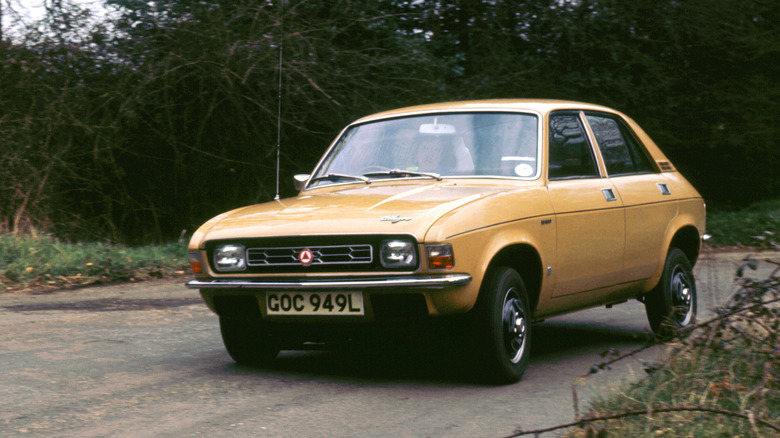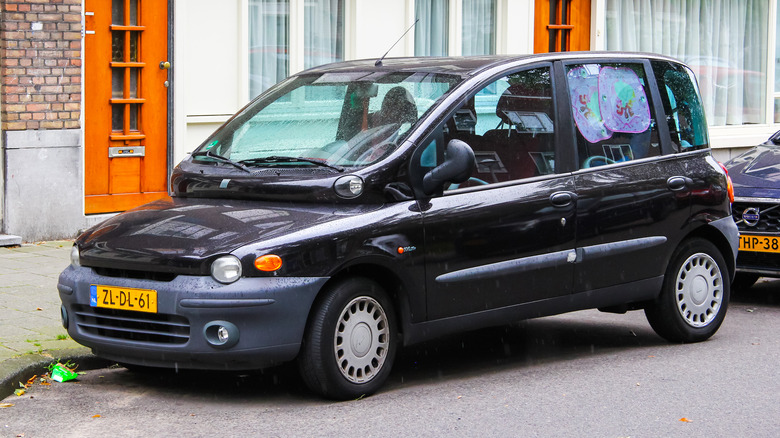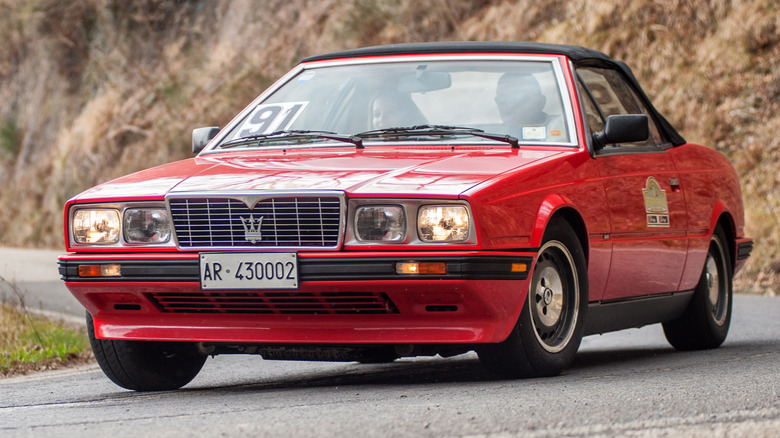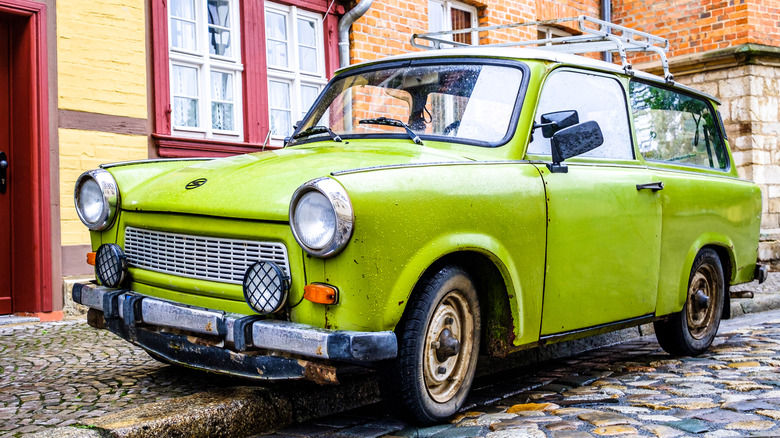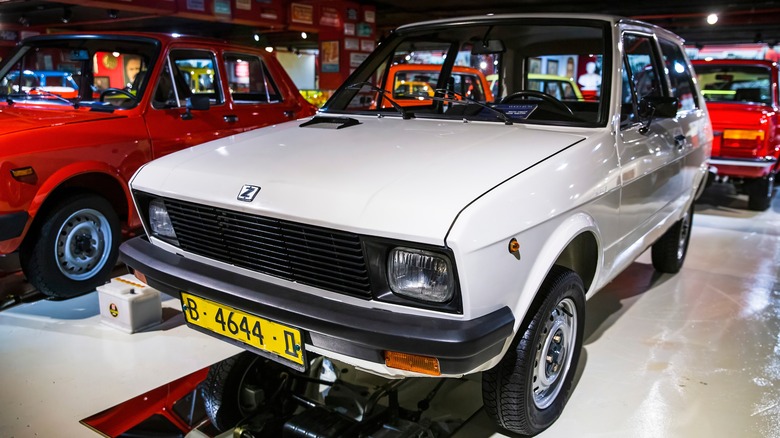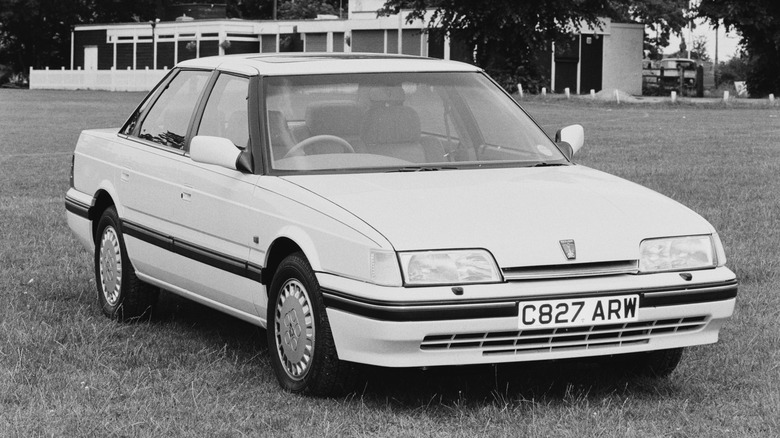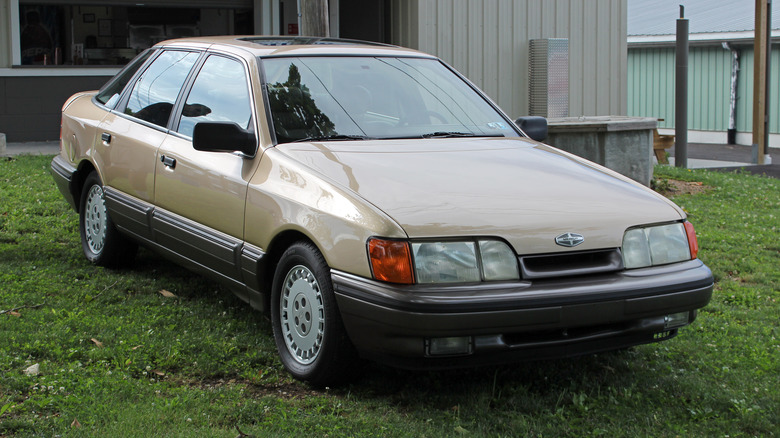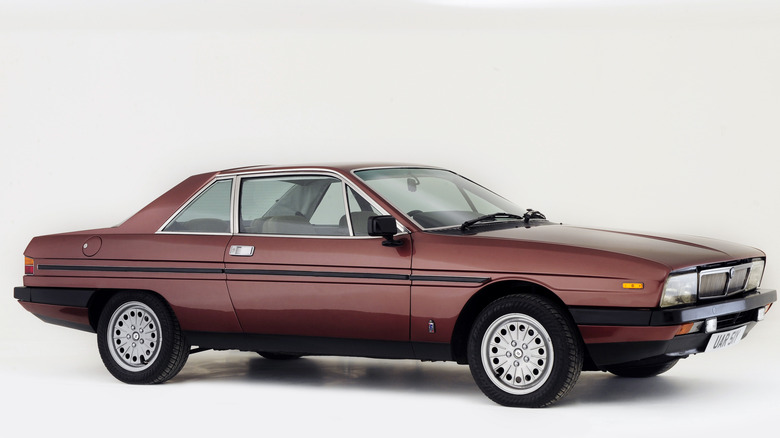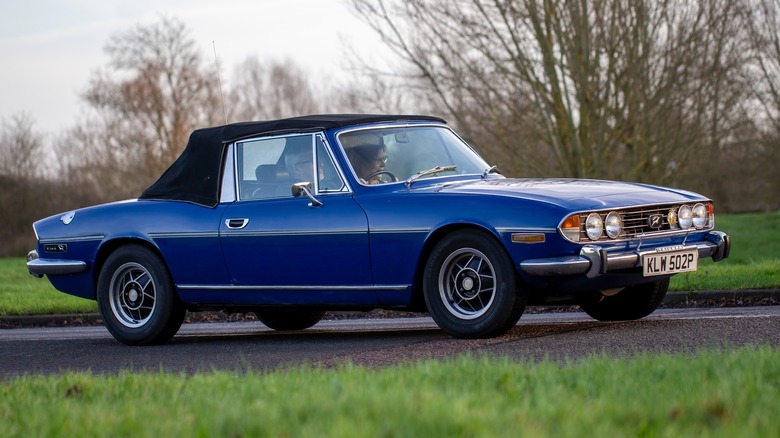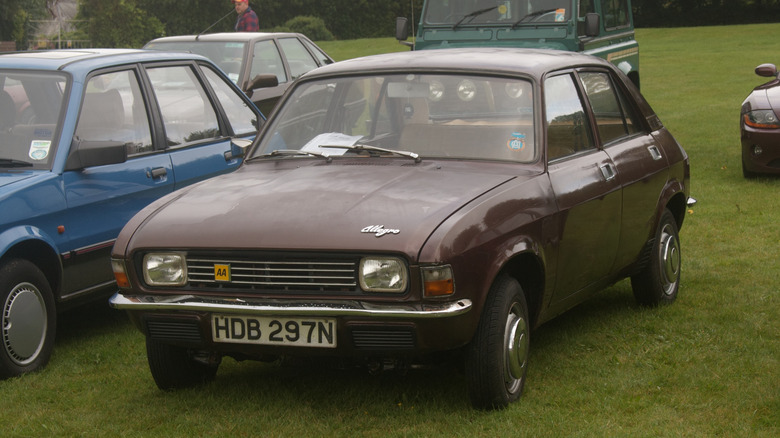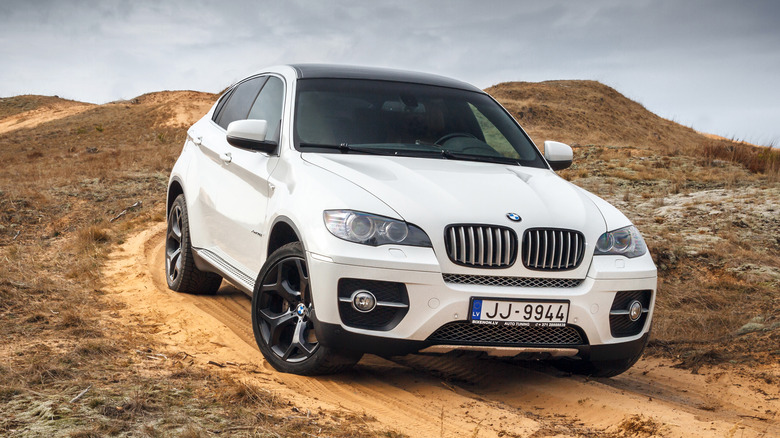10 European Cars That Were Huge Mistakes
European cars have huge fan bases all over the world and, to be fair, they really do make some great machines. And while they have blessed us with legendary vehicles such as the Lamborghini Miura and Ferrari F40, not all cars from the Old World are supercars. A great deal of the cars produced in Europe are never seen on North American shores. The bulk of the cars produced there are just as ordinary as a Buick sedan or Chevy compact and most are just fine. They are adequate for their purposes and generally as reliable as most anything else. Mostly, they are just transportation.
While the European continent churns out millions of ordinary vehicles every year, they occasionally send out some real duds. They may be horribly unreliable or unbelievably ugly. Sometimes they create a car to fit a purpose for which nobody wants one or one made for a purpose and just doesn't work as promised. Many brands have also been known to make a great car and never figure out how to sell it. So, for all the great supercars, sports coupes, and luxury sedans to come out of Europe, here are ten of the biggest mistakes.
Fiat Multipla
In the States, Fiat is mostly associated with small convertible sports cars and the diminutive 500. However, the company makes a wide range of cars sold in Europe and the rest of the world. The company is well known for making small family cars as well as people carriers. One such vehicle they made is called the Multipla and it was built from 1998-to 2010. But it is the first generation from 1998-2004 that receives the most attention.
On paper and in real life, the Multipla is a fine car. It is compact enough to fit down small European city streets and also fits nicely in the limited parking of medieval villages. The seat can be arranged such that an assortment of cargo can be hauled and it is reasonably efficient due to its 1.6-liter gas or 1.9-liter diesel engine options. However, it looks like someone started designing a small car and changed their mind halfway through and ended up grafting a minivan to the top of it. Inside it is filled with cheap-looking plastic and all of the control, dial, and gauges are stacked up in the center of the dashboard. The car is just plain weird and it is unbelievable any executives gave it the green light and actually put it into production.
What Car reviewed the Multipla and gave it reasonably high marks but also made clear remarks about the styling. It is not something that can be overlooked and it gets the Multipla on most lists of ugliest cars in Europe.
Maserati Biturbo
Maserati has a long and storied history as a manufacturer of some of the most exotic, fast, and sought-after cars in the business. While Maserati had for decades made race cars for the track and sports cars for the road, the 1980s brought about an era of luxury car making for the Modena-based automaker.
Debuted in 1981, the Biturbo showed that Maserati could build a GT car with a well-appointed interior and unique engineering under the hood. The twin-turbocharged V6 was the first production car to come with such a setup. Early models used Weber carburetors and fuel injection was swapped toward the end of the decade. But having nice interiors was never the problem for the Biturbo. Problems were the problem for the Biturbo. According to Car Throttle, the Biturbo is likely the reason Maserati left the American market in 1991. The Italians had a good recipe of good looks, a nice interior, and ample power. But, as Motor1 puts it, "after a couple of years, everything that could leak, burn, snap or rupture did so." Time had even harsher words for it, saying Biturbo is the Italian way of saying "expensive junk."
Italian cars often get a bad rap for being unreliable. This may not always be well deserved, but the reputation persists anyway. From the many stories that abound about the Biturbo, it may be a reputation Maserati earned in its own right.
Trabant
Some cars are universally known and either loved or hated while others remain more obscure. Trabant is the latter, being known mostly to lovers of quirky vehicles and aficionados of the Soviet era. The German Democratic Republic, or East Germany, built the Trabant as a socialist people's car from 1957 to 1990. It is a small, underpowered, and ill-equipped little car.
Socialist East Germany was not known for its manufacturing prowess. The Trabant was made by a state-owned factory and built to the lowest specifications. They used a 2-cylinder, 2-stroke engine of just 600cc, and it produced about 26 horsepower. The car had no options and fewer features. It was smoke, uncomfortable and small. Furthermore, the time on the waitlist to buy a Trabant was about 10 years throughout the duration of the socialist state. Also, since metal and other raw materials were in short supply in the eastern bloc, the body of the Trabant was made of a plastic and cardboard sort of hybrid called Duroplast. Therefore, it would not rust but did not guarantee it would not fall apart (via Deutsche Welle).
While the yearning of days gone by in East Germany, or Ostalgia as Deutsche Welle calls it, keeps Trabants on the road today, the fall of the Berlin Wall signaled their ultimate demise. The moment East Germans were allowed to cross over to the west and buy whatever capitalist largesse they could get their hands on, Trabant manufacturing ceased.
Yugo
While the Trabant was never imported into the United States, there was another dowdy little communist car that made it overseas, the Yugo. Based on the design of a Fiat under license, the Yugo was imported to the United States by Malcolm Bricklin, the man who originally imported Subaru and later built the Bricklin SV1. The original advertising push named the Yugo the lowest-priced car in the U.S. at just $3990.
Even though this little communist-built car was being imported into Reagan's decidedly anti-communist America, it initially sold well. Bricklin had dealers lined up across the country with plenty of willing buyers (via Car and Driver). However, it would not take long for buyer's remorse to set in as quality issues began sprouting up. Cars fared poorly in crash tests and they soon became the butt of jokes on late-night TV. While its reputation and poor publicity caused dales to fall, the fall of the Yugo brand came as the factory was bombed during the civil war in Yugoslavia and production halted.
Since then, the Yugo has become the poster child for terrible cars and widely received acclaim for its terribleness. Yet the New York Times reported that the Yugo still has a following. There are a small but dedicated group of people who are enamored with the little rattle boxes and keep them running today. One such person says with an endearing tone, "You can fix a Yugo with a butter knife and a rubber band."
Sterling
The American version of the Rover 800 of Britain is not well known — even among Americans. The reason few people remember them is that few people bought them in the first place. The Sterling began as a collaboration with Honda and the struggling British manufacturer Rover (via Motor Biscuit). The idea was for Honda to provide Rover with engineering for the chassis and drivetrain and Rover would build it and trim it with upmarket trim materials. The result was a nice-looking car with a well-appointed interior and Honda mechanicals. It should have been a winner.
One problem for Rover as well as British car makers in general is a reputation for producing cars of low quality. Supposedly, the Honda tie-in would help alleviate such issues. Motor Trend took a long look at the defunct auto brand and unearthed some of the multiple reasons for its demise. Not only did the cars receive many owner complaints at the time, but Motor Trend's long-term test car was also full of failures from faulty fuel gauge to trim pieces falling off. While the Honda version of the car, the Acura Legend, sat on top of the reliability ratings, somehow the British made essentially the same car come to sit at the bottom of the same list. The car only lasted four years and it was the last Rover to ever be seen in
Merkur
Merkur is an interesting tale of how Europeans can create a great product only to be ruined by Americans. In the 1980s, American car makers were constantly worried about European companies coming into their market and taking away customers. Many cars were brought out to combat this and some of them were not bad. Although, not all of their efforts worked.
Ford was a global manufacturer early in its history and it was a European manufacturing powerhouse, making some of the best-selling cars on the continent. The American management decided to bring in the Ford Sierra and Scorpio to sell upmarket Euro-style cars in the States. Hagerty claims it was brought over to compete with the likes of the Saab 900 and the BMW 3 series. It wanted the buyers who liked refined driving experiences with modern design over the stately American chrome and velour luxury. The problem with the smaller and sleek Euro driver is that it was in showrooms next to giant Town Cars and Continentals with hood lines longer than the Titanic. Buyers were confused and those looking for a Saab never showed up at the Lincoln-Mercury showroom to buy a car with a name nobody knew.
The reasons the Merkur never took off are many, but it was not necessarily because the car was bad. It was a fine car that failed due to bad marketing.
Lancia Gamma
Lancia has always been a small player in a game dominated by giants of the industry. Although, it has turned out some of the most attractive cars in history as well as some very good performers. Even some of its more "regular" models like family sedans have come out with striking lines and lively driving characteristics. The Lancia Gamma is at least striking.
That the Lancia Gamma is an attractive car is generally not in question, but the engineering choices behind it are generally questionable. The biggest fault of the Gamma, as noted by Jalopnik, is the decision to run the power steering pump off of a camshaft that is driven by a belt itself. This setup led to the situation in which a driver can start up the car on a cold morning, and, if the steering happened to be turned to full lock, the pump would bind the camshaft and force the cam belt to slip or break. Meanwhile, the other half of the engine would continue to try to run and grenade the other half. It was a bonkers engineering decision that was followed closely by the tendency of the body to succumb to rust, per Car and Driver.
To be fair, rusting Italian vehicles were common in the 1970s and 1980s, but having a self-destructive engine was kind of unforgivable. All problems aside though, if you are interested in having a bit of highly appealing classic Italian steel, a nice Gamma can be had for a reasonable price, with good examples selling for less than $20,000.
Triumph Stag
Coming from a carmaker with a fairly long line of successful models, such as the TR6, TR7, and Spitfire, the Triumph Stag had all that should have been needed to knock one out of the park. It had Italian styling. The rest was actually just British engineering and build quality. It is said that two out of three isn't bad, but one out of three is, in this case.
What a shame it is that such a phenomenal-looking car should have been the precipice of the downfall of British auto manufacturing. Perhaps it is not fair to lay the blame completely at the Stag, but it may bear some of it. The problem that arose with the Stag stems primarily from the engine.
During development, Triumph was a part of British Leyland, which meant it had access to other components from the company, such as the Rover 3.5-liter V8. The Rover engine was derived from a Buick design and has proved itself to be robust and reliable for years. Triumph instead chose to fuse two of their existing 4-cylinder engines into one and create a monstrosity that was prone to overheating. This heat led to warped heads, and that led further to warranty claims and furious owners (via Driving.ca). Furious owners led to a poor reputation and that led to low sales. Low sales led to the extinction of British auto manufacturing in Thatcher's Britain and that is where things get political and should probably end. The Stag ended up being a beautiful disaster.
Austin Allegro
Few people outside of the U.K. are likely familiar with the Austin Allegro, except for those introduced to it by Clarkson, Hammond, and May. Probably the reason it would be unknown to most Americans is that it is not a particularly memorable car. It was an affordable car for the family man of its time, and really nothing about it should have or would have stood out for any reason of particular interest. In fact, it generally only has qualities that stand out for bad reasons.
For Britons of a certain age, the Allegro is likely to conjure up vivid memories in an instant. Auto Express would have us believe it is the worst car ever. However, when dissecting any complaint about the little Austin, it seems that its sheer blandness is its main infraction. That it was designed and executed by a company amid the worst slump of its existence in which it turned out boring sheet panel after boring sheet panel. The Allegro seems to be so uninspired that designers thought changing the steering wheel to a steering square might spice things up a bit. Most pictures show a car with an assortment of brown and beige on the inside and out as a testament to just how boring and unattractive the car is.
BMW X6
It is not often that BMW and the word worst get together. As a manufacturer of high-end luxury cars as well as track-focused race-ready beasts, BMW has got a penchant for getting things just right. So when it does not get things right, it is doubly disappointing.
Everyone knows that in the modern age, no car company can survive without an SUV. The Americans took off with the concept, pioneered it, and tried to master it. It feels as though the European manufacturers resisted...until they didn't. Mercedes came out with the ML350 and not long after we had the BMW X5 and an Audi Qsomething or other.
What the X6 is supposed to be is anyone's guess. It comes with a choice of two powerful engines and sports low-profile tires on 20-inch rims like a sports car, but then it is tall and ungainly. The biggest issue is its sloping rear hatch. Edmunds noticed that it cuts out the headroom and minimizes the cargo space. This makes it less of a useful SUV and more like a sports car. And for the price of nearly $70,000, there are plenty of good sports cars available. It just feels like making a jacked-up way too tall station wagon is a huge mistake. BMW would do well just to make great cars and great SUVs and not mix the two ever again.
